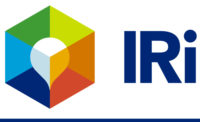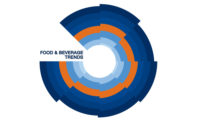U.S. Consumer Packaged Goods Market: Large Companies Cede Further Share
Demographic trends and protein-food inflation create growth opportunities

As growth picked up moderately in the U.S. consumer packaged goods (CPG) industry in 2014, small- and medium-size companies continued clawing away market share from their larger competitors, a trend that has been at work for the last several years, according to a new study by The Boston Consulting Group (BCG) and Information Resources, Inc. (IRI).

|
Overall industry growth in 2014 was 2.1 percent, compared with 1.6 percent in 2013. Small and midsize companies gained 0.7 share points, worth $4.5 billion, from larger competitors. Since 2009, smaller companies have taken two full share points, worth $18 billion. For the third year in a row, BCG and IRI examined more than 400 CPG companies with annual U.S. retail sales of more than $100 million and ranked them on the basis of their growth performance. The study, which includes both public and private CPG companies and focuses on what consumers actually bought in measured channels as opposed to what factories shipped, uses a combination of three metrics: dollar sales growth, volume sales growth, and market share gains. It also analyzes trends driving performance in the sector.
Because manufacturers of different sizes face distinct challenges and opportunities, BCG and IRI generated three top-ten lists of the best-performing companies: small companies ($100 million to $1 billion in IRI-measured retail sales), midsize companies ($1 billion to $5 billion), and large companies (more than $5 billion). Making it onto the list signifies that a company has performed at the top of its class during the past year and has growth momentum in the marketplace.
Topping the growth leader list of large companies for 2014 are Johnson & Johnson, Mondel?z International, and PepsiCo. The leaders among midsize companies are Mead Johnson Nutrition, Keurig Green Mountain, and Monster Beverage Corporation. Among small companies, Teva, SkinnyPop Popcorn, and Kind lead the list.
“Our top-ten lists consist of companies of many sizes with brands in multiple categories and price tiers, making one thing clear—growth is possible for all types of CPG manufacturers,” said Dr. Krishnakumar (KK) Davey, president, Strategic Analytics, IRI. “In fact, PepsiCo, one of the largest CPG companies, grew nearly $1 billion in measured channels last year, three times more than any other company, and four to five times more than other comparable-size companies.”
“Leaders in all three categories capitalized on broad demographic and industry trends,” said Dan Wald, a BCG partner based in Chicago. “They also show consistent success across the three principal growth levers—velocity, distribution, and price and product mix.” Among the key trends affecting growth in 2014, the research pointed to:
• Consumers trading both up and down price points in response to macroeconomic volatility and inflation in certain food and beverage segments, such as high-protein foods.
• Population and spending growth in three big demographic segments—seniors, Millennials, and Hispanics.
• An unwillingness among consumers to compromise on health, taste, and convenience.
• The expansion of e-commerce in grocery, which creates growth opportunities for early movers that use digital channels.
Looking for a reprint of this article?
From high-res PDFs to custom plaques, order your copy today!








